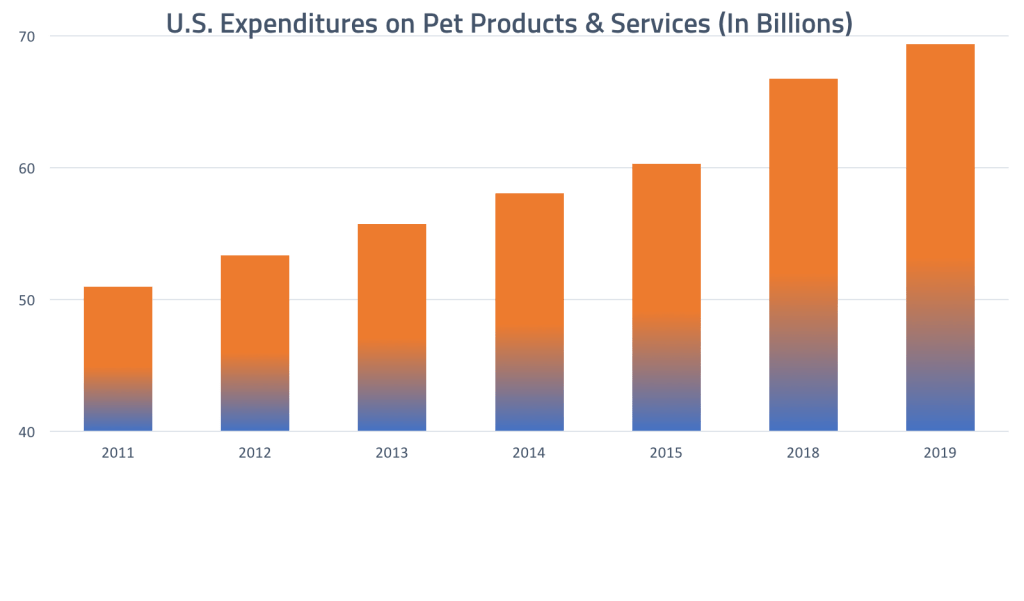Anti-Aging? It’s Not Just For Humans Anymore
Anti-aging products are been burgeoning, even in one area where some people might be surprised they’ve made headway. Can you guess that market sector, on that’s shown this kind of galloping growth over the last decade?
- 68% of Americans are involved in it as of 2016, up from 54% in 2009.
- Spending in this sector has soared faster than GDP since the Great Recession.
- U.S. personal consumption expenditures in this category hit $99.0 billion in 2015—up 35% from 2009.
If our headline wasn’t a giveaway, here’s the answer: Pets, pet products and pet-related services have been a hot segment, with 68% of Americans now owning a pet, according to the American Pet Products Association. 60.2% of American households own a dog, and 47.1% own a cat. To keep them all fed, we spent $28.23 billion on pet food in 2016, an amount that’s projected to grow to $29.69 BN this year.
 What’s driving this love of pets (and anti-aging opportunities)?
What’s driving this love of pets (and anti-aging opportunities)?
It’s a generational shift that began with Baby Boomers, who account for the biggest share of pet spending, and who first stepped away from the attitude of older generations who regarded pets as just animals. They passed along their attitude that pets are “members of the family” to Gen X and Gen Z. Which is why pet food quality is now a big concern for pet owners, as well as the level of health care they’re willing to pay for on behalf of their furry (or sometimes scaly, or feathered) friends.
Researchers are certainly aware. A new compound, rapamycin, is being tested as an anti-aging drug for humans and pets.
What’s this love of pets and market growth mean for anti-aging ingredient formulators and manufacturers?
Pet food sales are expected to grow at a CAGR of 2.5% over the next five years, compared to just 1.3% for all packaged-food sales. And anybody who’s seen their share of dog or cat food commercials knows there’s a widening range of specialty foods for the aging pet companion, promising probiotic and antioxidant benefits, among others.
Pet food manufacturers already call on the specialty chemical industry for various ingredients (we’ve got some of them as customers ourselves!). So it’s not much of a stretch to see how new ingredients and nutraceutical approaches to anti-aging – already a growing category – will take even greater hold, rewarding formulators who can develop product additives that help preserve a pet’s vitality and health while adhering to consumer demands for natural ingredients.
When it comes to getting the “best for my pet,” we’re all willing to open our wallets and embrace innovation, if we think it’ll help them feel good well into their senior years.
After all, who could deny anything to a face like this?

 What’s driving this love of pets (and anti-aging opportunities)?
What’s driving this love of pets (and anti-aging opportunities)? 